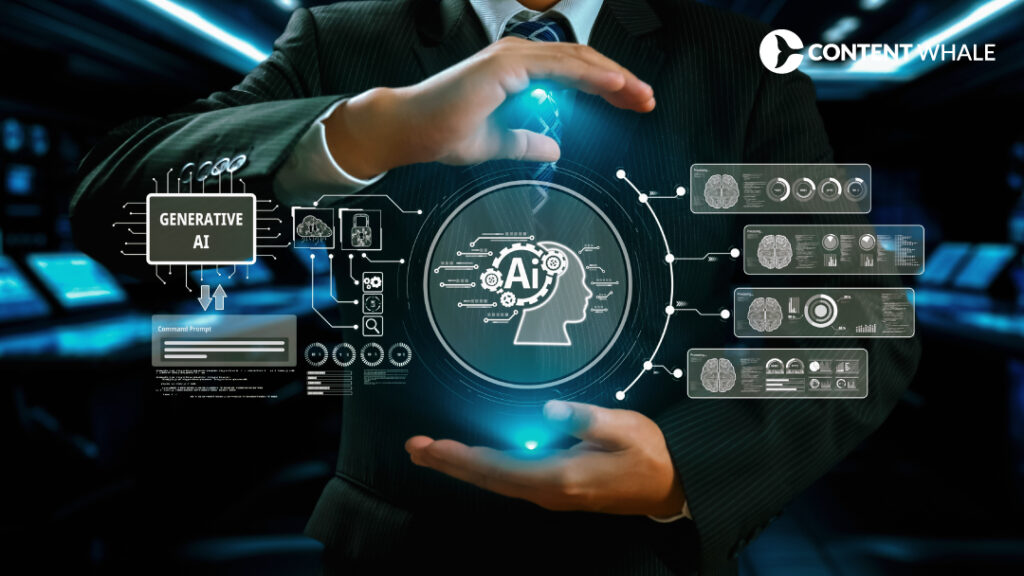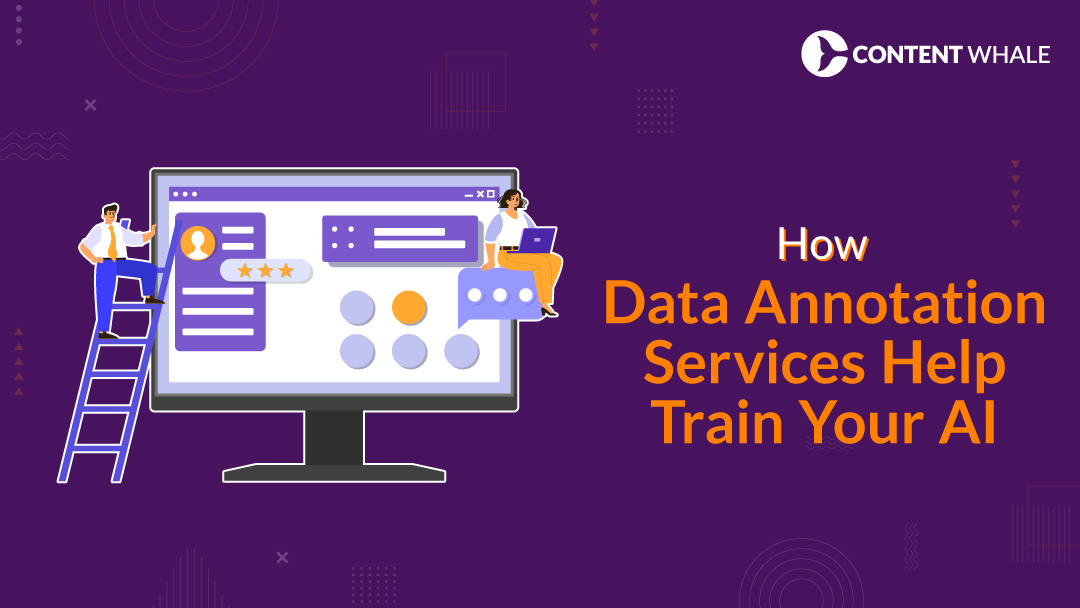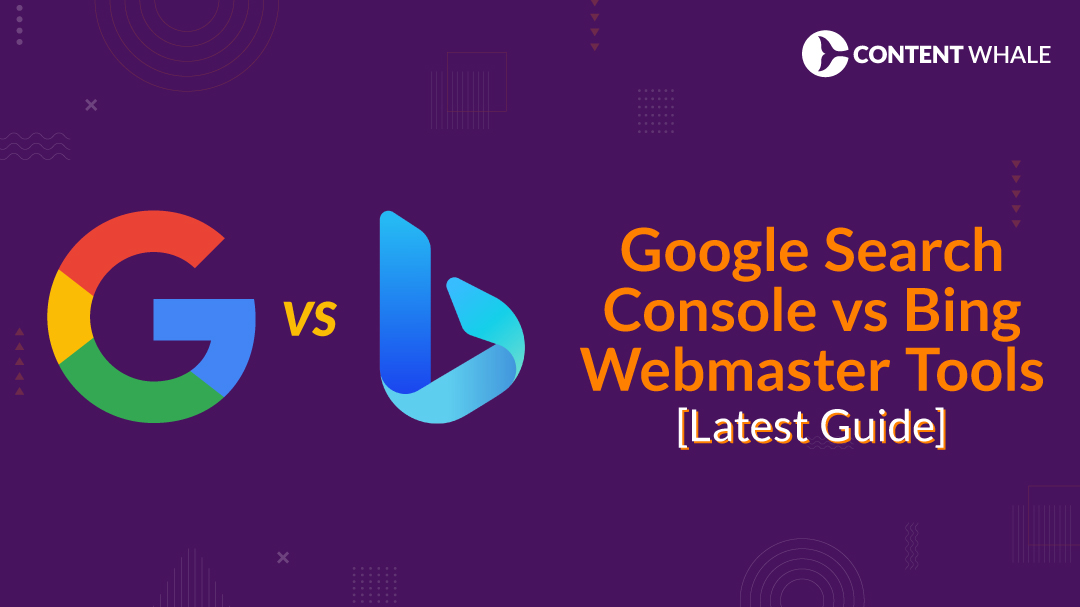Generative AI has moved well beyond ChatGPT and its original applications, evolving into a powerful tool that’s reshaping industries.
From its initial role in enhancing conversational interfaces, AI has quickly become a cornerstone of innovation across various sectors.
This evolution is paving the way for the future of generative AI for enterprises, where its potential stretches far beyond simple text generation.
As companies explore new enterprise AI applications, they’re finding that generative AI is not just an upgrade but a transformation.
It’s enabling business automation, driving efficiency, and fostering AI-driven innovation across the board. Whether it’s crafting new drugs or designing materials with specific properties, the impact is significant.
Generative AI’s ability to create synthetic data for secure and effective model training further expands its utility in areas requiring high levels of privacy.
The AI transformation is well underway, promising to redefine the future of AI in business.
The Role of Generative AI in Drug and Material Design
Generative AI is making remarkable strides in drug discovery and material design, transforming these fields by enabling innovations that were once out of reach.
Accelerating Drug Discovery
In the pharmaceutical industry, generative AI is streamlining the process of developing new drugs. AI platforms, such as NVIDIA’s BioNeMo, are being utilized by biotech companies to simulate molecular structures and predict their properties.
This allows researchers to identify promising drug candidates more quickly and efficiently than traditional methods.
For example, Insilico Medicine’s use of generative AI has led to the discovery of novel molecules now advancing through clinical trials.
These AI systems not only cut down on research time but also reduce the cost of bringing new drugs to market.
Innovations in Material Design
Beyond pharmaceuticals, generative AI is also revolutionizing material science.
AI-driven design tools can create new materials with specific properties, which are essential in sectors like automotive and aerospace.
These materials can be lighter, stronger, and more durable, leading to better product performance and enhanced energy efficiency.
For instance, AI-generated materials are being tailored for high-performance applications, improving everything from vehicle manufacturing to construction.
Ensuring Privacy with Synthetic Data
The integration of synthetic data is another critical aspect, ensuring that AI models used in these processes are trained effectively while maintaining privacy.
This is particularly important in healthcare, where sensitive data must be handled with care.
Synthetic data allows for robust AI model training without compromising patient confidentiality.
Generative AI is not just an improvement over existing methods; it represents a transformative force in enterprise AI applications across various industries.
As businesses explore these AI-driven innovations, the potential for AI transformation in drug and material design continues to expand.
Revolutionizing Media and Entertainment with AI

Generative AI is rapidly transforming the media and entertainment industry, offering unprecedented opportunities for creativity, personalization, and efficiency.
Transforming Content Creation
Generative AI tools are revolutionizing how content is created, from writing scripts to generating realistic visuals.
Filmmakers and producers are now leveraging AI to create detailed storyboards, enhance visual effects, and even generate entire scripts based on simple prompts.
This technology allows for quicker production cycles and reduces costs, enabling creators to focus more on innovation.
In some cases, AI-generated content is being used to create entirely new forms of media, such as AI-generated films and music, which push the boundaries of traditional entertainment.
Personalizing Viewer Experiences
With AI, media companies can provide highly personalized experiences for viewers.
By analyzing user data, AI can recommend content tailored to individual preferences, ensuring that audiences spend less time searching and more time enjoying content that resonates with them.
This level of personalization is becoming increasingly important as consumers demand more from their entertainment platforms.
Creating Digital Twins and Beyond
Generative AI is also being used to create digital replicas of actors, known as “digital twins,” which can simulate an actor’s voice, movements, and appearance.
This technology not only extends the lifespan of an actor’s career but also raises questions about the future role of human actors in the industry.
As AI continues to develop, we may see entirely new forms of entertainment emerge, where digital and human elements blend seamlessly.
The future of generative AI for enterprises in media and entertainment is not just about automation; it’s about unlocking new creative possibilities and transforming how we experience content.
As this AI-driven innovation continues, the boundaries of what is possible in entertainment will continue to expand.
Synthetic Data: The Backbone of AI Privacy

Synthetic data has emerged as a critical tool in ensuring privacy while enabling the robust training of AI models.
This data, artificially generated yet highly realistic, provides a way to sidestep the privacy concerns associated with using real-world data, especially in sensitive fields like healthcare and finance.
How Synthetic Data Works
Synthetic data is created by algorithms that mimic the statistical properties of real data without replicating exact data points.
Techniques like Generative Adversarial Networks (GANs) and Variational Autoencoders (VAEs) are commonly used to generate synthetic data that is nearly indistinguishable from the real thing.
This allows businesses to train AI models on data that behaves like real-world data but doesn’t carry the same privacy risks.
Applications in Privacy-Sensitive Industries
In industries where data privacy is paramount, such as healthcare, synthetic data is invaluable.
It enables researchers and businesses to develop and test AI models without exposing sensitive personal information.
For example, synthetic data can be used to simulate patient records for medical research, ensuring compliance with regulations like GDPR while still enabling high-quality AI-driven innovation.
Balancing Innovation and Risk
As the future of generative AI for enterprises continues to unfold, the use of synthetic data is becoming more widespread across various enterprise AI applications.
However, the process is not without its challenges. While synthetic data can mitigate privacy concerns, there are still generative AI risks associated with ensuring that this data accurately represents the underlying real-world scenarios it seeks to emulate.
Businesses must carefully balance the benefits of AI-driven innovation with the need to maintain data integrity and security.
The role of synthetic data in AI is set to expand as enterprises seek to leverage the power of AI while safeguarding privacy, making it a cornerstone of the ongoing AI transformation across industries.
Generative AI in the Metaverse: Building the Future

Generative AI is rapidly becoming a cornerstone in the development of the metaverse, enabling the creation of immersive, dynamic, and personalized virtual environments that were previously unimaginable.
Creating Immersive Virtual Worlds
Generative AI allows for the rapid creation of vast and intricate virtual environments within the metaverse.
This includes everything from realistic landscapes to complex structures, all generated procedurally by AI algorithms.
By leveraging generative AI, developers can build diverse and responsive worlds that adapt to user interactions in real time, enhancing the immersive experience.
These capabilities significantly reduce the workload for designers and programmers, allowing them to focus on more creative aspects of the environment.
Personalized User Experiences
In the metaverse, generative AI plays a crucial role in personalizing user experiences.
By analyzing user data, AI can generate unique avatars, custom narratives, and even personalized audio tracks that match individual preferences and behaviors.
This level of customization helps create a more engaging and interactive environment, making each user’s experience in the metaverse unique.
Challenges and Ethical Considerations
While the potential of generative AI in the metaverse is vast, it also brings significant challenges.
Issues such as intellectual property rights, data privacy, and the risk of creating harmful or misleading content are at the forefront of discussions.
Ensuring that the AI-generated content is ethical and respects user autonomy is essential as these technologies continue to evolve.
As the future of generative AI for enterprises unfolds, its integration into the metaverse represents a significant step forward in AI-driven innovation.
By pushing the boundaries of what’s possible, generative AI is not only transforming enterprise AI applications but is also reshaping how we interact with and experience virtual worlds.
Strategic Implementation and Risk Management in AI

Implementing generative AI in businesses requires a careful balance between seizing opportunities and managing potential risks.
A strategic approach is essential to maximize benefits while safeguarding the organization from various challenges.
Mapping Risks Across Use Cases
The first step in effective risk management is identifying and categorizing the risks associated with different generative AI use cases.
These risks can range from data privacy concerns, such as the improper handling of sensitive information, to model inaccuracies that could lead to biased or erroneous outputs.
By creating a detailed risk map, organizations can prioritize their efforts and focus on the areas with the highest potential impact.
Developing a Governance Framework
Once risks are identified, a robust governance framework is crucial. This includes setting clear principles and guidelines for AI use, ensuring transparency, and maintaining human oversight.
For example, integrating checks such as human-in-the-loop mechanisms can prevent AI from making unverified decisions that could harm the business.
Regular monitoring and updating of these frameworks are necessary to keep pace with the rapidly evolving technology.
Technical and Non-Technical Mitigations
Risk mitigation strategies should encompass both technical and non-technical measures.
Technically, businesses can implement controls like data encryption, secure access protocols, and the use of synthetic data to protect privacy.
Non-technical measures include continuous employee training to ensure they understand the implications of using generative AI tools, especially when handling sensitive data.
Ongoing Monitoring and Adaptation
Given the dynamic nature of AI technology, organizations must continuously monitor their AI systems and update their risk management strategies.
Regular audits and assessments help in identifying new risks and adapting the governance framework accordingly.
This ongoing vigilance ensures that the implementation of generative AI remains aligned with the organization’s strategic goals and compliance requirements.
Strategically managing the implementation of generative AI not only minimizes risks but also enables businesses to confidently explore the full potential of this transformative technology.
By staying proactive and adaptive, companies can lead the way in AI-driven innovation while maintaining trust and compliance in their enterprise AI applications.
Conclusion

The integration of generative AI beyond ChatGPT is rapidly reshaping the enterprise landscape, offering vast potential for innovation and efficiency across various sectors.
As businesses explore the future of generative AI for enterprises, they are discovering its capacity to revolutionize processes, from AI-driven innovation in product development to personalized customer interactions.
However, this transformation is not without challenges. Implementing AI requires careful consideration of generative AI risks, particularly in areas such as data privacy and model accuracy.
The road ahead involves balancing the exciting possibilities of enterprise AI applications with the need for robust risk management strategies.
By staying informed and adopting a strategic approach, businesses can harness the power of generative AI to drive growth and maintain a competitive edge in an increasingly AI-driven world.
The AI transformation is already underway, and those who manage it effectively will lead the charge in the new era of AI in business.
1. What is generative AI, and how does it differ from other AI?
Generative AI refers to algorithms that can create new content, such as text, images, code, or even entire virtual environments, by learning patterns from existing data.
Unlike traditional AI, which focuses on analyzing data and making decisions based on predefined rules, generative AI is designed to produce novel outputs that mimic the structure and style of the data it was trained on.
This ability to generate creative content has applications beyond traditional AI, making it particularly valuable for enterprises looking to innovate in areas like business automation and AI-driven innovation.
For example, in AI in drug design, generative AI can simulate molecular structures that researchers hadn’t considered, accelerating the drug discovery process.
2. How will generative AI impact my business by 2025?
By 2025, generative AI is expected to significantly impact businesses across various sectors, enabling more personalized customer interactions, streamlining content creation, and optimizing operations.
In marketing, for instance, AI can generate personalized emails and social media content at scale, enhancing customer engagement.
In product development, it can accelerate design cycles by automatically generating and testing multiple prototypes.
The future of generative AI for enterprises also includes improving decision-making processes by providing data-driven insights and predictions, making businesses more agile and competitive.
However, to fully benefit from these advancements, businesses must address generative AI risks, such as data privacy and model bias, through strategic risk management.
3. What industries will benefit most from generative AI?
Industries that rely heavily on content creation, design, and data analysis are poised to benefit the most from generative AI.
This includes sectors like media and entertainment, where AI can generate realistic visuals and automate editing processes.
In healthcare, AI in drug design and diagnostics will see significant advancements, speeding up research and improving patient outcomes.
The technology also holds promise in manufacturing, where it can optimize production processes and enhance product design.
Furthermore, enterprise AI applications in finance and retail are expected to revolutionize customer service, predictive analytics, and operational efficiency by leveraging the creative and analytical capabilities of generative AI.
4. What are the risks associated with generative AI?
While generative AI offers immense potential, it also comes with several risks. One major concern is data privacy, as AI models often require vast amounts of data, including sensitive information, to function effectively.
There’s also the risk of biased or inaccurate outputs, which can arise if the AI is trained on unrepresentative or flawed data.
Additionally, the widespread use of generative AI raises ethical issues, such as the creation of misleading or harmful content, including deepfakes.
Businesses must implement robust governance frameworks to manage these generative AI risks. These frameworks must ensure that AI outputs are monitored and validated to prevent misuse and maintain trust.
5. How can enterprises start implementing generative AI?
Enterprises looking to implement generative AI should begin by identifying the specific use cases that align with their business goals.
This could involve automating content creation, enhancing customer support with AI-driven chatbots, or optimizing product design.
It’s crucial to ensure that the existing technology infrastructure can support the demands of AI models, particularly in terms of data processing and storage.
Assembling a cross-functional team with expertise in AI, data science, and the relevant industry is also essential.
This team can guide the integration of generative AI into enterprise AI applications while addressing any potential risks.
Continuous monitoring and regular updates to the AI systems will help businesses stay ahead in the ongoing AI transformation.





